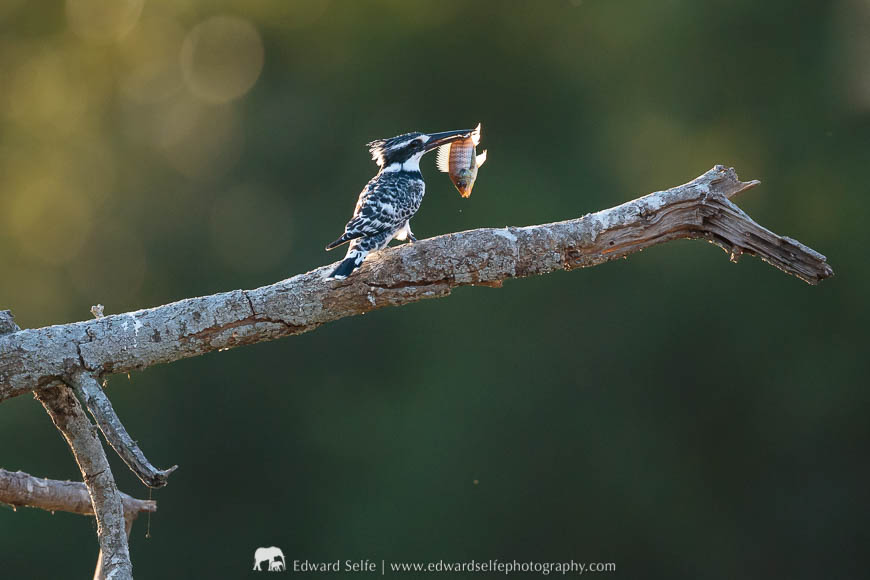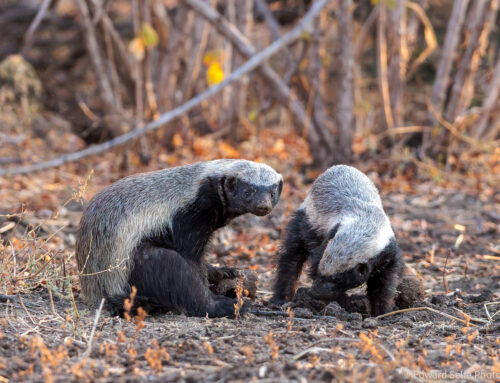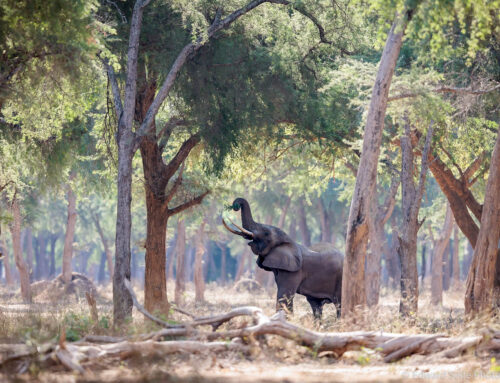I first knew about Mana Pools in 2004 when friends told me about a stunning, mature forest on the banks of the Zambezi River in Zimbabwe. Even then, before it had enjoyed the fame that it is enjoying these days, it was revered as a wild and authentic safari area. But it took me until May 2018 to visit it for myself!
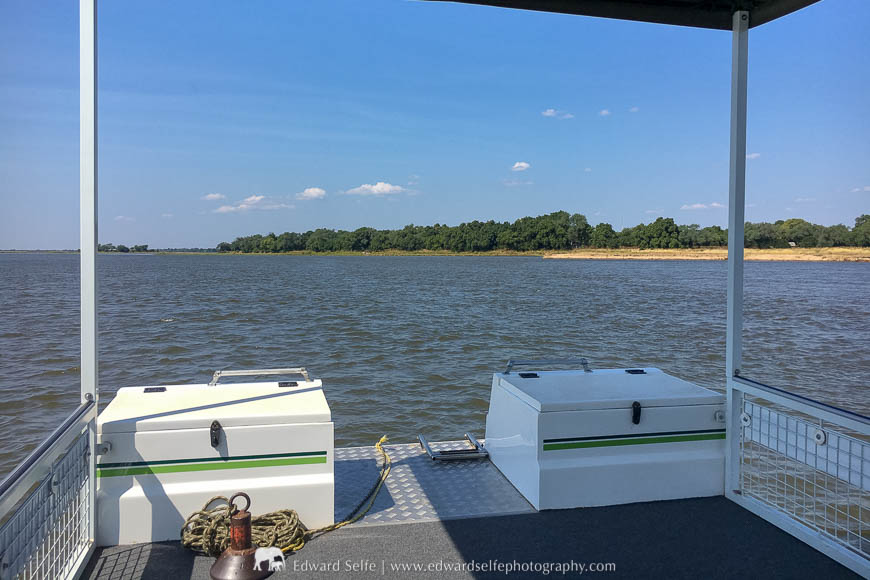
The Zambezi is an enormously wide river, stretching several hundred meters across in places.
Even now, it is an inaccessible area; a challenge to visit, but protected by its remoteness from the high visitor numbers that many National Parks now experience. Access is by road (not for the faint-hearted), by plane or by a boat transfer along the river from Chirundu, 80kms upstream to the West. It was by boat, after a comfortable and scenic 2 hour transfer, that we arrived in Mana Pools. We were booked in at John’s Camp, an authentic bush camp at the Eastern end of the park, named after the renowned Zimbabwean guide John Stevens. The camp is run by John’s daughter and son-in-law, Sarah and Milo, and has recently been included in the collection of exclusive Robin Pope Safaris camps.
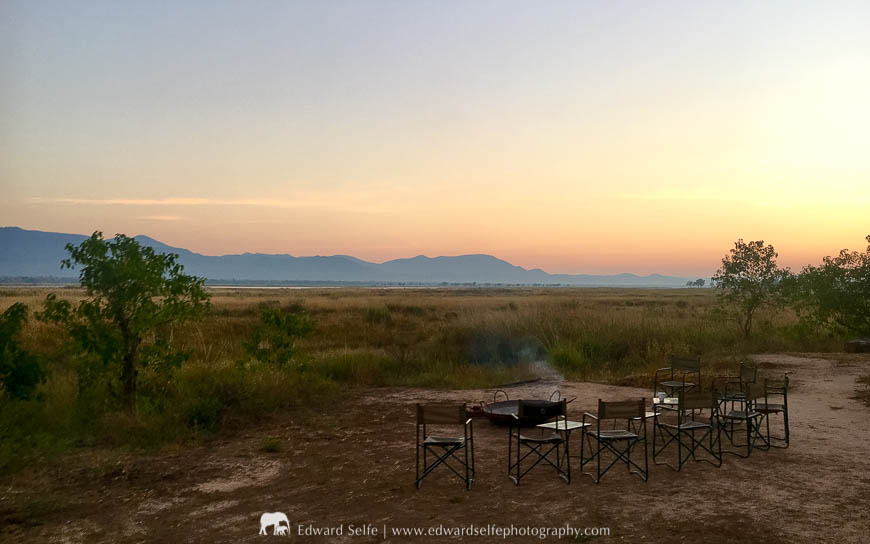
There is nothing commercial about Mana Pools, but John’s Camp perhaps takes this one step further. They are the only camp on the Eastern side of the park’s HQ at Nyamepi, which gives them an area of operation that is more private than other camps further to the West. They have taken the idea of a real bush camp and refined it with touches of comfort, class and elegance that make the camp experience all the more remarkable in their remote location.
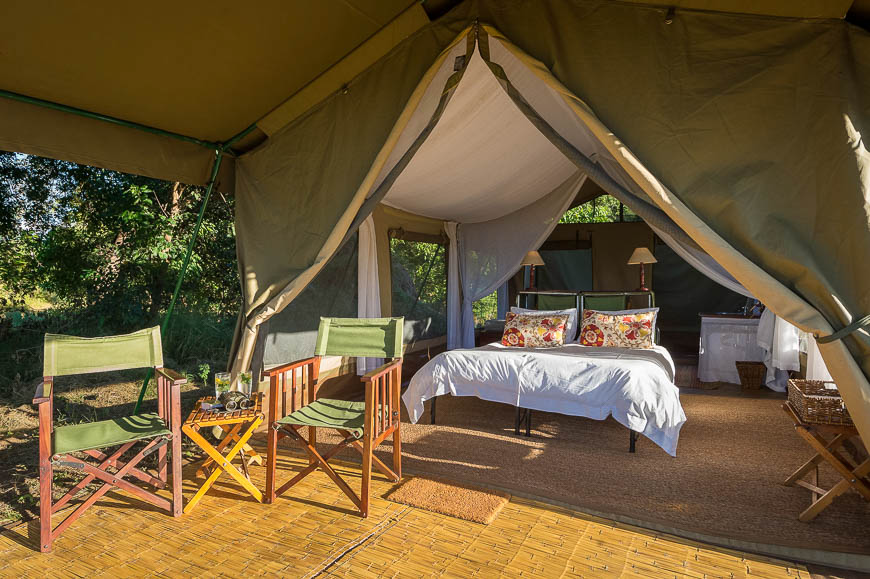
John’s Camp is a thoughtfully constructed bush camp in a beautiful spot overlooking the Zambezi and the escarpment on the Zambian side of the river.
The park is made up of the relatively narrow Zambezi floodplain and, inland from that, the thick perennial bush that lies above the floodline of the Zambezi River. As the season develops, more and more of the game emerges from the thickets and resides on the floodplain with its rich feeding grounds and access to the river.
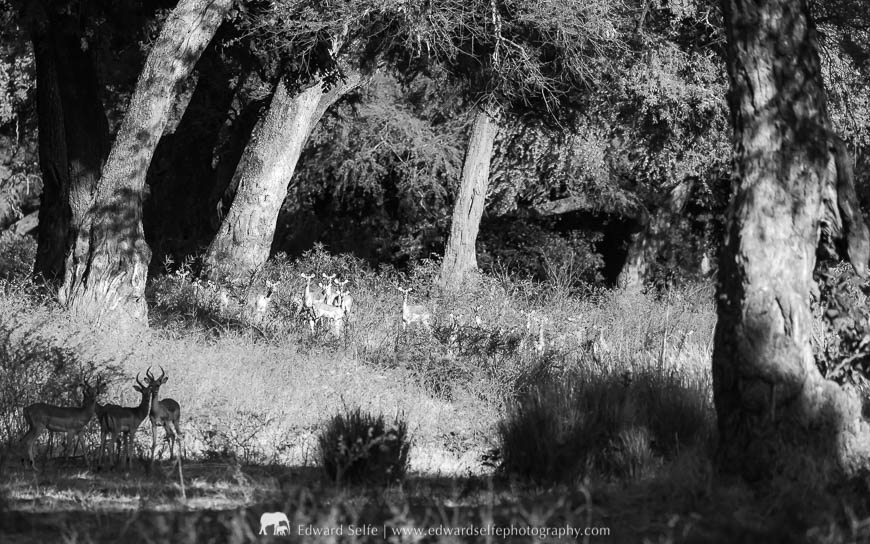
In the rich riverine zone, impalas feed on the shrubs among the stately trees.
Of course, the scenery is outstanding. Along the river, there are broad grasslands running down to the water’s edge where elephants feed in the reed-beds and dip long trunks into the enormous river. A few steps back from the water, the habitat changes and quickly becomes the ancient forest that has captured the imaginations of so many aspiring to visit Mana Pools. Leadwood, winterthorn and African ebony trees stretch away into the distance with sparse vegetation between their trunks that diminishes daily as the dry season rolls on.
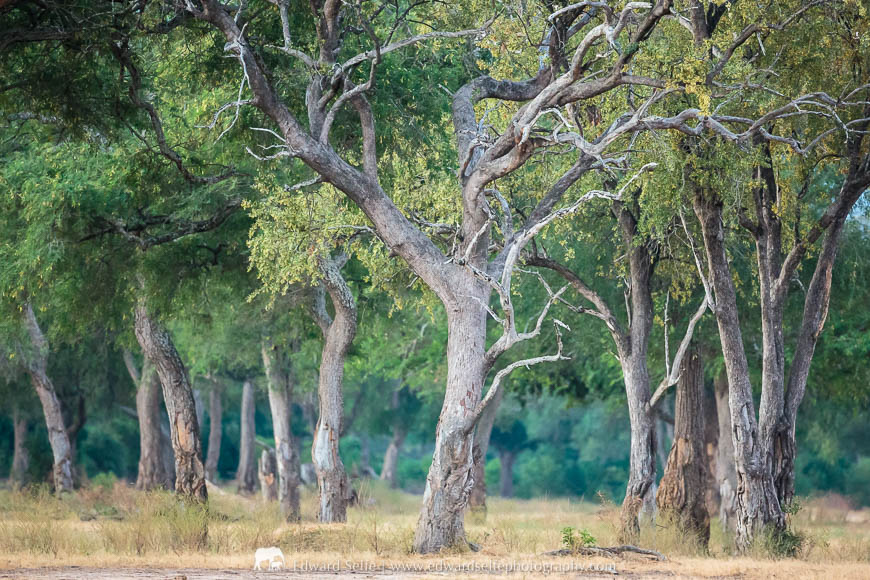
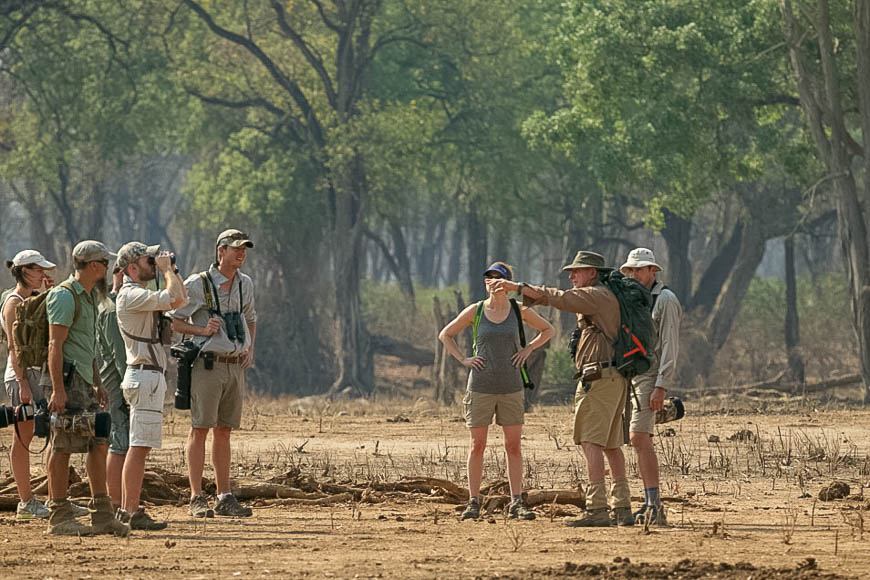
Among these large trunks, impala browse the sickle-pod bushes and elephants lift extendable trunks to the fresh leaves of the winterthorn trees. When we visited, the impalas were in the peak of their rut, so our safari was punctuated by snorts and roars that seem so unlikely to come from Africa’s most elegant antelope. It’s easy to see how the accumulation of dust in the atmosphere would generate superb lighting and photographic opportunities in a few months’ time.
We left camp on our first afternoon in Mana Pools to go in search of a mating couple of lions which we’d seen on our way in from the boat transfer to the National Park. Predictably, they were asleep under a bush, though the female was clearly hungry as she locked her eyes on to a pair of sparring impalas nearby, and even began to stalk them. But she lost interest, so we decided to move off and return when the temperature had dropped.
We headed to the majestic forests just inland from the riverine strip, hoping to find some elephant feeding from the large winterthorns. In this area, family herds accompany the large bulls, knowing that the bulls will reach for high branches and drag them down, possibly allowing some spoils for the rest of them! Before we had travelled far, I caught sight of something in the leaf-litter near the road as we passed. I asked our guide, David, to stop. I said “Um, please go back, I think I’ve just seen a pangolin!”. Keeping in mind that this was 5pm and still daylight, there was some disbelief from others around me!
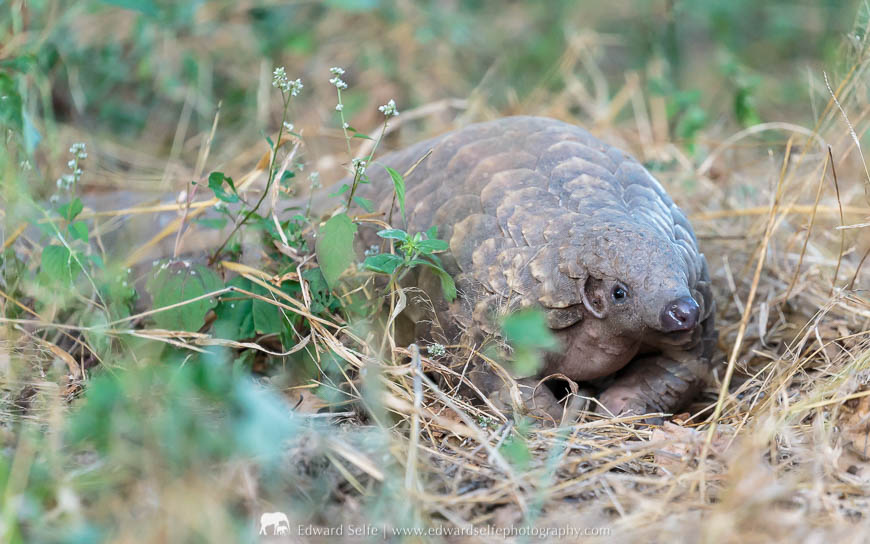
But there is was! Hiding behind a tree, but with its long tail still visible, was my first ever pangolin! For a while, I forgot about elephants, forests, large rivers and decided that even if we saw nothing else, my trip to Mana Pools would have been worthwhile! With David as a qualified walking guide in Zimbabwe, we were able to get out of the vehicle and approach this terribly shy and normally nocturnal creature. Pangolins are mammals, birthing live young and feeding them on milk, but appear reptilian with their covering of large scales. They feed on ants, using a long tongue to extract them from holes. Despite their protective scales, they are slow-moving and vulnerable to predation so therefore tend to be active at night. When disturbed, they roll into a ball and not even the strength of hungry lions can get inside.
We took some great photos of the pangolin as it foraged in the leaf-litter, occasionally lifting its head to look around and fix us with a beady eye. What encourages a pangolin to leave its burrow early in the afternoon and forage, rather than waiting until the cover of nightfall, we’ll never know! We left it to feed, hoping that we hadn’t traumatised it too much, and set out towards camp. Safaris in Mana Pools end at 6pm so we arrived in camp at last light, in time to sit at the fire with a beer before supper.
We heard the lions in the night, but they appeared to be further away, so we chose to spend the morning exploring the stunning forest areas in the hope of finding wonderful light and interesting subjects. As we moved through the forests, my eye kept identifying beautiful areas and we noted them for future trips. The ability to walk through the landscape at any time enabled us to get out of the vehicle and approach elephants and manoeuvre ourselves for the best shots in a way that is harder in a vehicle. It’s thrilling to walk among these large animals and, of course, the angle that you enjoy when photographing an elephant on foot is also very pleasing.
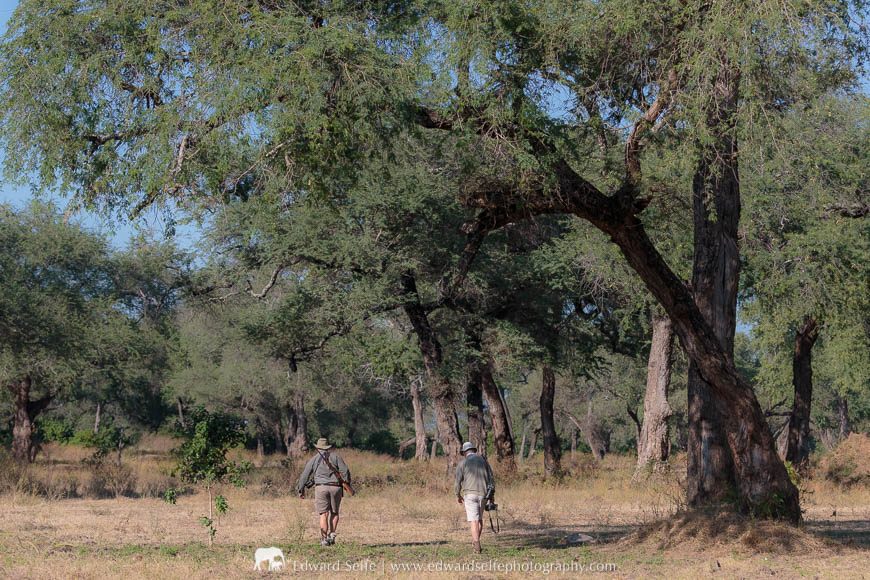
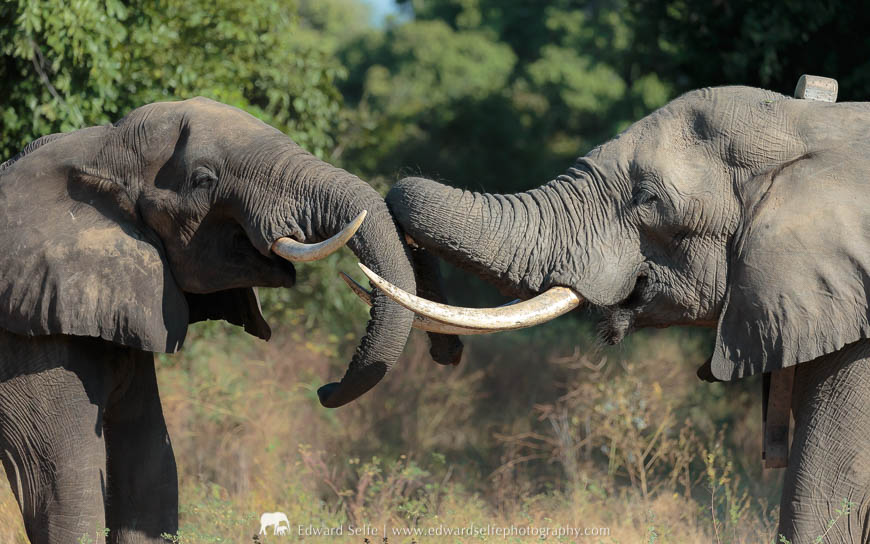
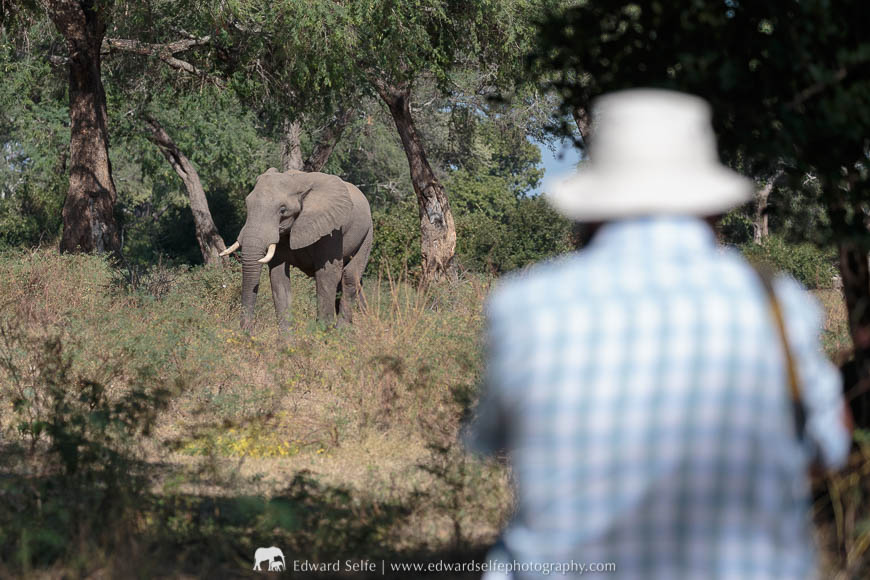
Using a large tree as a base, we watched while large bull elephants fed all around us.
We stayed out late in the morning, way beyond when the light was useful, exploring new areas and noting game movements. We saw lots of large birds of prey, small pockets of eland, a couple of little clusters of buffalo and zebra, and plenty of hippos along the river. All these factors point to a healthy and thriving ecosystem that promises much for photographic safaris.

Observing from a termite mound, scouting for game in the surrounding area.
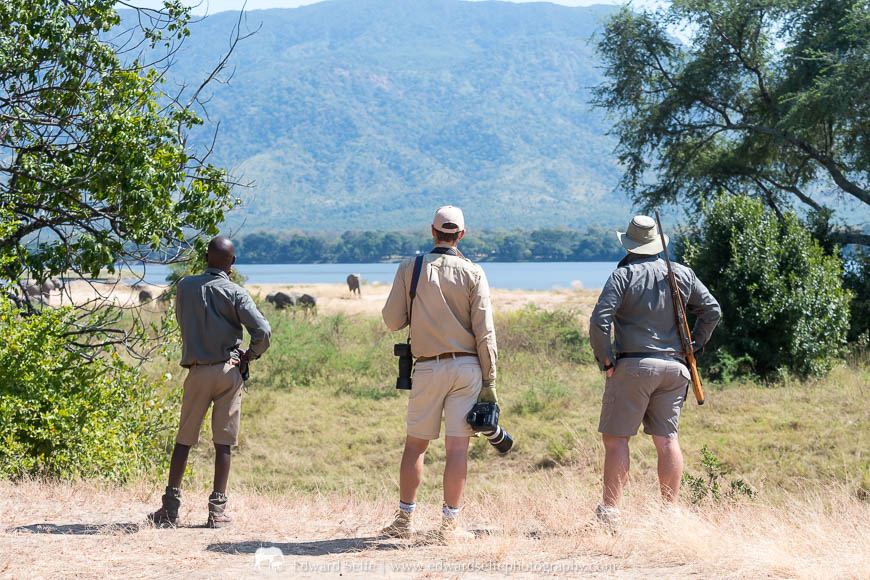
We found these elephants down at the water’s edge. I wanted to watch them from a spot where we could take photos including the large river, so we planned a route to walk down to them.
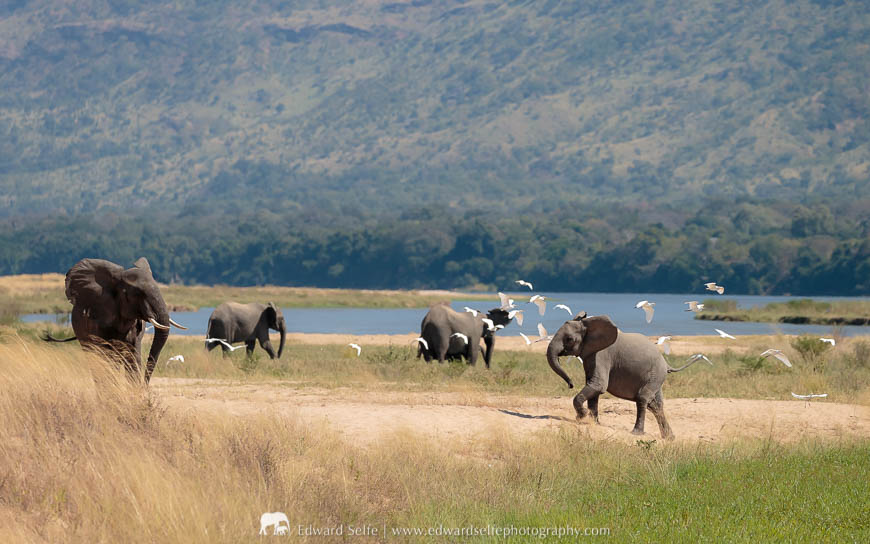
As we waited, the elephants began to emerge from the woodland and wander down to the river banks to feed and drink.
We travelled inland in the afternoon, looking for wild dogs. We knew it was a gamble since there is little game further from the river, so we pinned our hopes on finding them. We weren’t lucky this time, but we did explore some of the pools that give the park its name. Many of them never dry and become honey-pots for game from July onwards.
Once again, we heard the lions in the night, but they sounded much closer. We left early in the morning and almost immediately found a large male on the road. He appeared to be alone, but we soon heard the sound of others nearby, and he pricked up his ears. We walked to where we’d heard the lions that we couldn’t see, and found the other male with at least 2 females. It appears that the male we saw on the road is attempting to form a coalition with the male who had been mating the previous few days. In the early part of the season, when there have been many months of unobserved lion activity, it is often hard to know exactly how the pride structure will settle during the season.
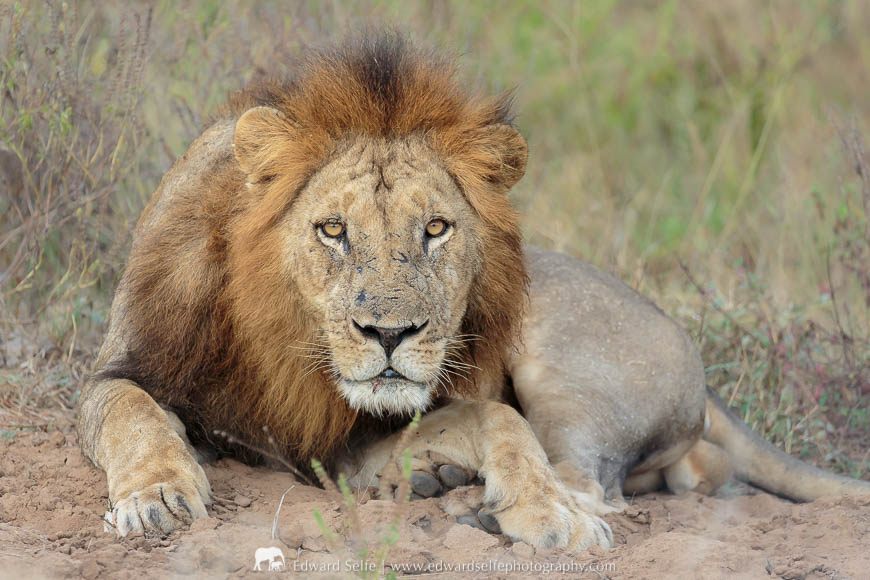
This lion had clearly spent several months without coming across people; he was quite shy at first and took time to settle down in our presence. Eventually, we were able to move close to him and enjoy his battle scarred face.
With the rest of the morning, we explored the river front areas, occasionally walking to the water to photograph elephants drinking and feeding along the bank, and enjoying the incredible volume of water that passes down the Zambezi every second. There were a couple of beautiful photo opportunities including a male impala dwarfed by a massive winterthorn, and a separate male impala with incredible horns much longer than anything we see in the Luangwa.
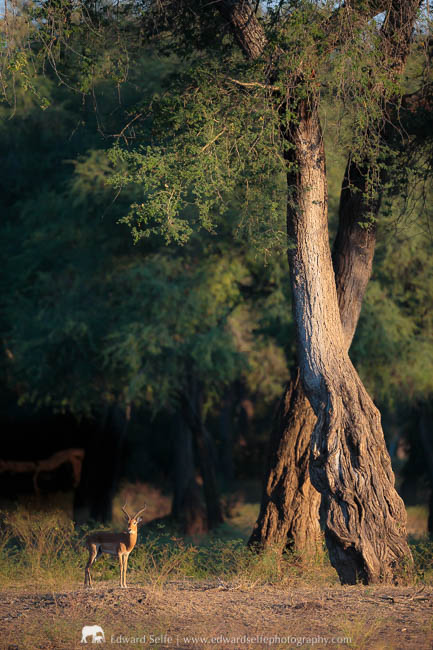
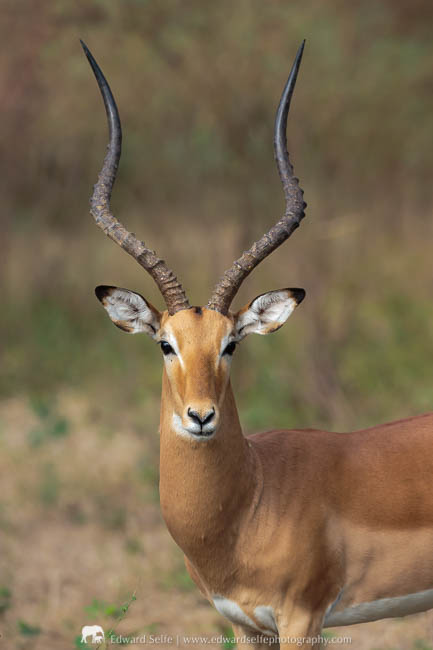
Mana Pools is a unique and beautiful park that offers visitors the chance to walk in prime safari areas that would often be “vehicle-only” areas in other National Parks. It is also a small park, with a very restricted zone of activity later in the year, forcing incredible concentrations of game and predators together for a few months in the late dry season.
Photographically, it’s fantastic and it thrills me to think of the opportunities that it will offer when I lead safaris there in the future. I am already in talks with Robin Pope Safaris about using John’s Camp as a base for a 5-night trip later this year, and I’ll be running scheduled trips there in 2019. Please contact me if you’d like to join so that I can reserve spaces or select dates that suit you. I will only run one or two trips each year, so availability will be tight. I hope that you will join me!
